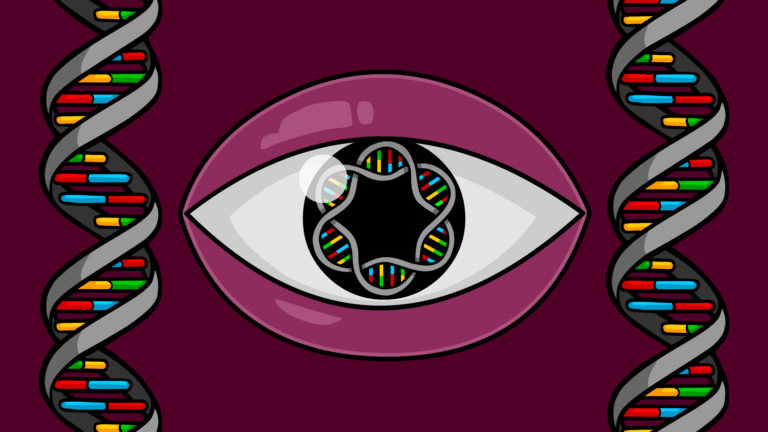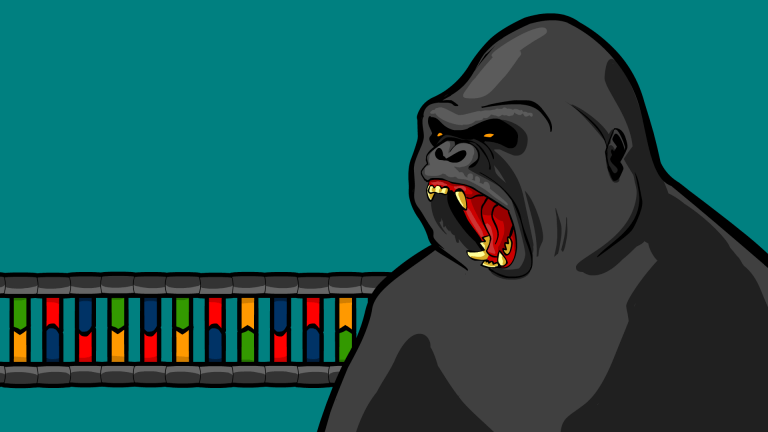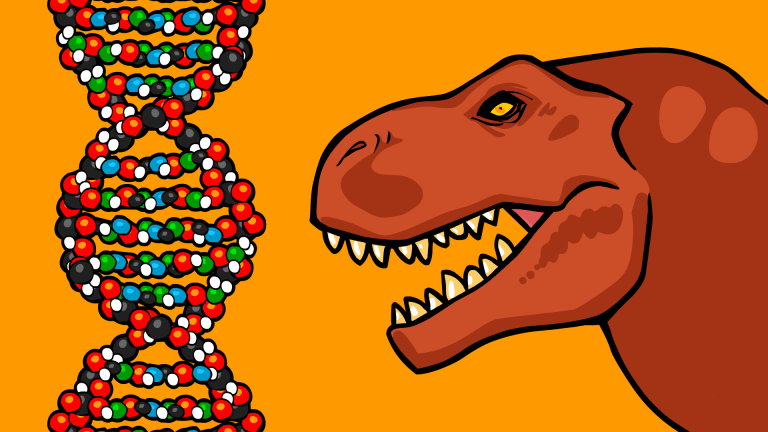Overview
Why do genes cooperate so well? The truth is, they don’t, at least not always. Here we look at how genes can rebel and what other genes in the genome must do to stop the rebels from ruining everything. We also look at how cooperation and policing work in non-human animals such as badgers, bats, and birds.
Explore Further
Scientific Papers show in the animation:
- Adaptation is maintained by the Parliament of Genes (main paper of this video)
- Overview of Selfish Genetic Elements
- Experimental work demonstrating how Suppressor Elements keep sex ratios in check
- Sex-Ratio distorter tracked in the wild (This is a wonderful paper!)
Papers about species displaying abnormal sex-ratios, and the causes
Contributors
Our videos benefit from guidance and advice provided by experts in science and education. This animation is the result of collaboration between the following scientists, educators, and our team of creatives.
Team
- Jordan Collver
- Jeremiah Deasey
- Anthony Danzl
- Tyler Proctor
- Jon Perry
Advisors
- Stuart West, PhD
Transcript
Right here, right now, you and I will dive head first into a series of new discoveries helping to answer what I see as the biggest question Darwin’s theory of evolution has ever faced:
Why do genes (mindless replicating molecules) cooperate in the construction of complex living creatures?
Stated Clearly presents:
Genetic conflict and the Parliament of genes.
When people first learn about evolution they often assume that natural selection can only drive organisms to become increasingly brutal from generation to generation.
This, of course, is a misunderstanding of what fitness means in biology. While brutality certainly does exist in nature, the process of evolution also generates beautifully complex social behaviors. The ability to cooperate has evolved many times. The reason it evolves is that natural selection simply selects for what works at getting genes into the next generation. Cooperating instead of fighting works really well for this in many cases.
Right here, for example, we are seeing a coyote and a badger join forces to hunt ground squirrels. Coyote/badger team-ups are surprisingly common in the wild. Scientists have found that the unique combination of different hunting styles between coyotes and badgers happens to allow coyotes to catch far more ground squirrels when working with badgers than they would when working alone or with fellow coyotes.
Badgers also seem to benefit but not as much and maybe that’s why this one seems a bit grumpy. The coyote has to “badger” the badger to get him going.
If relationships like this last long enough (many, many generations) one or both participants can evolve new traits that streamline cooperation even further. For example long-nosed bats race against each other to find and then feed on the pollen and nectar of cactus flowers. While feeding, any pollen that ends up caught in their fur is accidentally spread from cactus to cactus, allowing the plants to reproduce. It’s a win-win situation!
Any mutation that happens to enhance a bat’s ability to sniff out cactus flowers will tend to help it find food before other bats get there first. All else equal, the mutant will survive more efficiently and have more offspring than bats without the new mutation. Many of those Offspring will, of course, inherit the new trait and will also out-compete their rivals. This is evolution by natural selection.
Likewise, any mutation that happens to enhance a cactus flower’s perfume can help it attract bats from further away. This will increase the plant’s odds of being pollinated, allowing it to reproduce better than competing cactuses. This little tournament has been running for many generations and as a result, long-nosed bats have evolved an extremely keen sense of smell and the Organ Pipe Cactus has evolved an incredibly musky perfume.
Cooperation like this has evolved many times in nature but along with it, new opportunities to cheat can also emerge. This is a red billed oxpecker. The oxpecker earned that name spending its days picking at ticks on the backs of zebras, elephants, and oxen. When tick season is extra bad, this is a beautiful example of mutualism. The zebra gets free parasite removal and the bird gets a free meal.
That said, every once in a while, especially when ticks are scarce, a hungry oxpecker will sometimes steal a chunk of flesh. If host animals don’t punish greedy oxpeckers, the relationship can turn parasitic.
It turns out that truly flawless cooperation can only develop when the best interests of each individual happen to be aligned with the best interests of all fellow cooperators. Perfect alignment is rare, therefore, incentives to cheat pop up often in nature.
In response, various forms of policing or “suppression” evolve to reduce those bad incentives.
In an earlier animation we learned that evolution by natural selection occurs all the way down to the level of genes. “The Gene’s Eye View” of evolution is the recognition that genes are the smallest evolvable entities competing in what Darwin called the struggle for existence.
A genome is a collection of genes that evolved to cooperate extremely well. Together, your genes built you. Your body’s many fantastic adaptations and spectacular complexity are all evidence of your genes’ extreme cooperation. The main reason genes cooperate has been well understood for many years now. Cooperation can be an excellent way to increase one’s fitness. Any gene that happens to help a shy insect better blend in with its environment – that gene also helps itself and its fellow genes survive and replicate. It’s a win-win… win situation, but here’s the question that remains:
If individual genes really are evolving entities, shouldn’t we see at least some genes evolve the ability to cheat? What I mean by “cheat” here is: Shouldn’t some of your genes have evolved the ability to replicate at the expense of other genes in your genome? The answer is yes! Cheating genes actually do exist!
Scientists call these cheaters “selfish genetic elements”. Here we’ll see how a particularly dangerous type of selfish genetic element works, and we will look at new research showing how other genes in the gene pool evolve to stop those cheaters from ruining everything.
So, how can a gene (a mindless chain of chemicals) evolve to cheat?
Fruit flies, like many other animals, use a male/female mating system. Males here are defined as flies who have an X and a Y chromosome, and produce sperm cells.
Females are those who have two X chromosomes and lay eggs. Each sperm cell and egg cell contains a copy of a random half of the parent’s DNA. That DNA is arranged into bundles we call chromosomes. A father’s sperm cells contain half of his chromosomes, including a copy either of his X chromosome which he inherited from his mother, or his Y chromosome which he inherited from his father.
In most cases, Y chromosome sperm go on to produce male children. X chromosome sperm produce female children. There are exceptions to this rule but we will save that for another video.
In many fruit fly species roughly half of the sperm a male produces carry his X chromosome, the other half carry his Y chromosome. In other words, we can expect his ratio of sons and daughters to be about 50 : 50. on several occasions, however, scientists have discovered individual flies with mutations on their X chromosomes that cause sex ratio distortions. A mutated Gene makes what you could think of as a Y-sperm toxin. If a male possesses this mutation on his X chromosome, all or most of his Y-carrying sperm will fail to develop. He will only produce X-chromosome sperm, he will only have daughters.
Now this is great news for the new mutation and for all the genes with it on the X chromosome. They will end up in every single one of the father’s children, instead of only half like they normally would.
When those daughters find mates and have children of their own, roughly half of their sons will also carry the mutation and will only be able to have daughters. In other words, natural selection rapidly promotes the new mutation.
This, my friends, is a problem!
As each generation passes, males become increasingly rare and females have an increasingly difficult time finding mates. What started out as a mere problem for genes on the Y chromosome is now a problem for all fruit fly genes. In fact, if left completely unchecked, the short-term gains that this mutation now enjoys could result in the complete collapse of the fruit fly population. A sex-ratio distorter is a dangerous selfish genetic element. It makes copies of itself at the expense of the rest of the genes in the genome. Genes can cheat!
So what happens now? Are the flies all doomed for extinction? Have we just discovered a fatal flaw in Darwin’s theory of evolution? Surely there’s no such thing as gene police, right? Genes that can somehow stop selfish genetic elements from cheating?
Well surprise, surprise, it turns out that when we study fruit flies with sex-ratio distorters, things you might call “Gene Police” actually can evolve and when they do, they take charge fast!
Within any large enough population, individuals can be found who have suffered a mutation causing one gene to interfere with the behavior of another gene in that organism’s genome. If that interference ends up hurting the larger host, chances are they won’t be able to make as many babies as others in the population. This mutation will eventually be purged by natural selection. If, however, a mutation pops up causing a stretch of DNA to interfere with a selfish genetic element, now we have a policing gene! Scientists officially call these “suppressor elements”: A stretch of DNA that stops selfish genetic elements from functioning.
To understand how the blind process of evolution ends up automatically producing complex self-policing genomes, Dr Egbert Lee proposed the following: Imagine the genome is a large parliament of genes with members constantly arguing about how things should be done. Each individual might have its own special interests and tasks but if one or a few genes start behaving in a way that reduces the fitness of most of the other genes in Parliament, those other genes will suddenly have a united interest in suppressing the cheaters. Furthermore, because the parliament is so large compared to the cabal of rebel genes, the Parliamentary majority is likely to win every conflict.
Now, genes of course, don’t really “argue” or have “minds” or “self-interests” they’re just molecules capable of evolution, protein coding and so on, but think about this in the case of our fruit fly population that is now mostly made of females. If a surviving male happens to have been born with a mutation in any one of his genes, and that mutation happens to stop the selfish element from cheating, that fly will suddenly be able to have sons again!
There are thousands of genes each surviving male has which could mutate to take on this new task. Even though the selfish genetic element got a nice head start, the odds are heavily in the parliament’s favor! It seems as though a policing gene should eventually emerge.
Many of these sons and daughters produced by that first lucky mutant will be carriers of their father’s suppressor element. Furthermore, because by now those sons are pretty much the only males around, it won’t be too hard for them to find multiple mates. This causes the policing Gene to spread like wildfire from generation to generation until a stable sex ratio is approached.
It’s important to note that policing genes do not evolve and spread for the “good of the species”. What’s really happening here is that as soon as there are more females than males in a population, any mutation that makes a gene more likely to place itself in a male body is going to spread further. This is because males in this situation can mate with more partners than females, therefore, males are likely to generate more offspring. One way for a gene to end up in more male bodies is to fight sex ratio distorters.
So here we see that policing genes are not selflessly sacrificing for the good of their community. Policing genes serve themselves. In the process they happen to help their fellow genes as well: A classic “win-win” and in this case they accidentally save their fly hosts from potential extinction.
Biologists Thomas Scott and Stuart West recently produced mathematical models examining how the parliament of genes works in multiple scenarios. They found that even though the emergence of a suppressor gene is a chance event, the parliament is so large compared to the cheating gene that depending on population size, plenty of chances exist for lucky mutations to accidentally produce a suppressor. Once a suppressor element emerges, the selfish element is stomped out incredibly fast. In fact, their math shows us that the worse the cheater is, the faster the suppressor will spread. Their models predict that the parliament of genes can suppress any type of dangerous trait-distorter, not just Y-sperm killers like the ones we’ve seen here. Best of all, their models match what we actually see when studying selfish genetic elements in the lab and in the wild.
Selfish genetic elements are not a fatal flaw to Darwin’s theory. Genetic cooperation is automatically maintained by the parliament of genes.
So, just to recap here: All of the drama we see in human societies and in the animal kingdom – cooperation, cheating, and even policing – this drama can also be found all the way down at the level of the gene.
Many types of selfish genetic elements can evolve. Some drive the overproduction of female offspring, some drive the overproduction of male offspring. Others simply act as freeloaders, mildly bogging an organism down.
When a selfish genetic element evolves, the model of the parliament of genes tells us there is plenty of opportunity for a mutation to arise somewhere else in the gene pool that will suppress the cheating gene. Direct observations in the lab and in the wild have confirmed that this Parliament model is accurate. Once a suppressor arises, it rapidly spreads through the population, restoring genetic cooperation.
Over time, things like deletion mutations and further selection events can even purge a cheating gene and its suppressor from the gene pool altogether.
The blind process of evolution – descent with modification acted upon by natural selection – appears to be all that is needed to maintain the incredible cooperation found within our genomes. Adaptation is maintained as natural selection works on the parliament of genes.
I am Jon Perry and this was genetic conflict and the Parliament of genes, Stated Clearly




